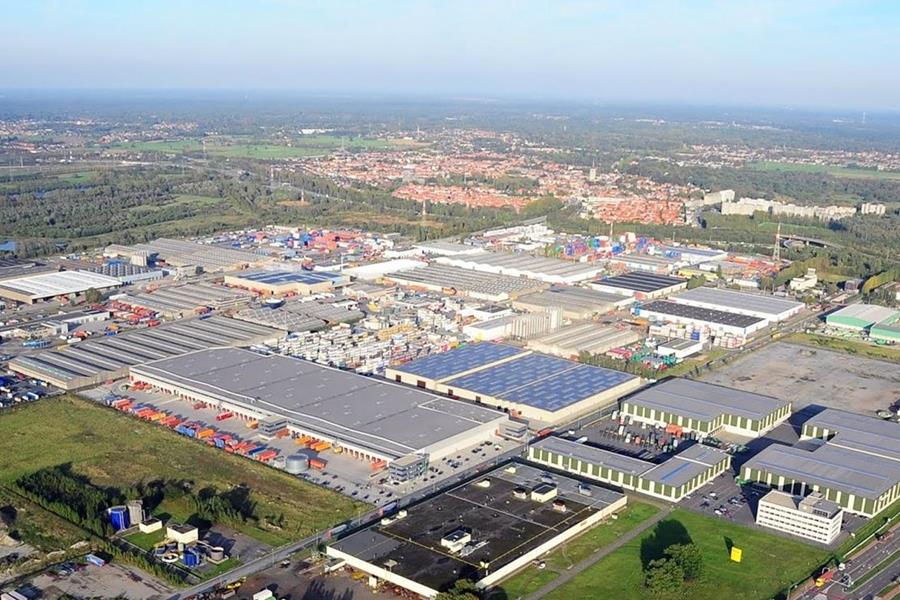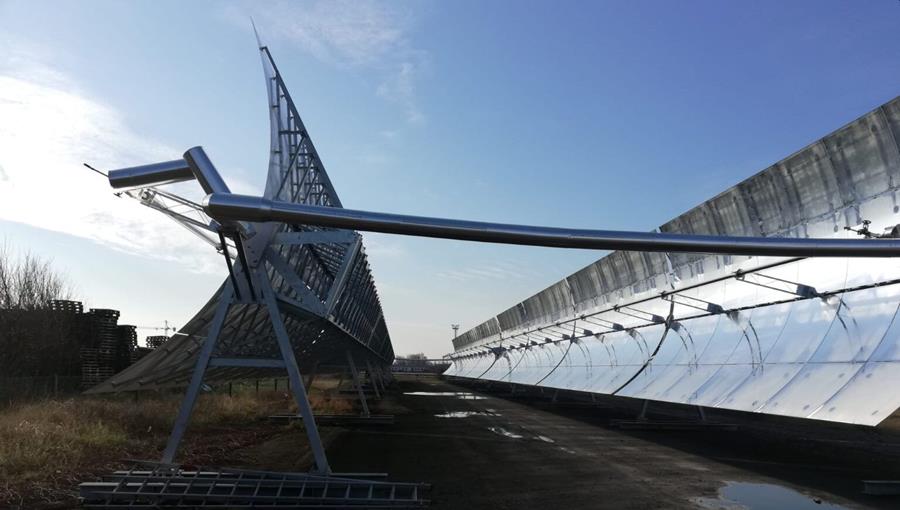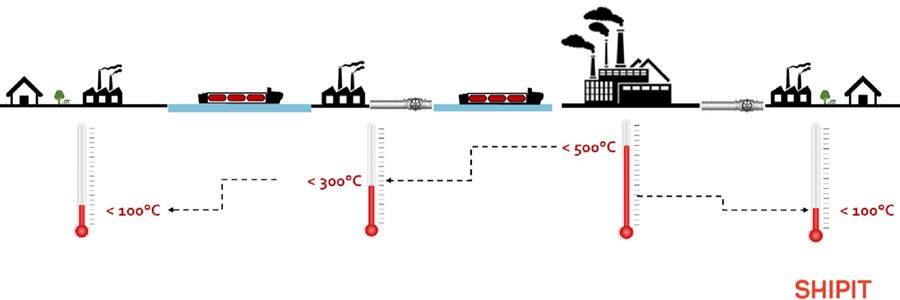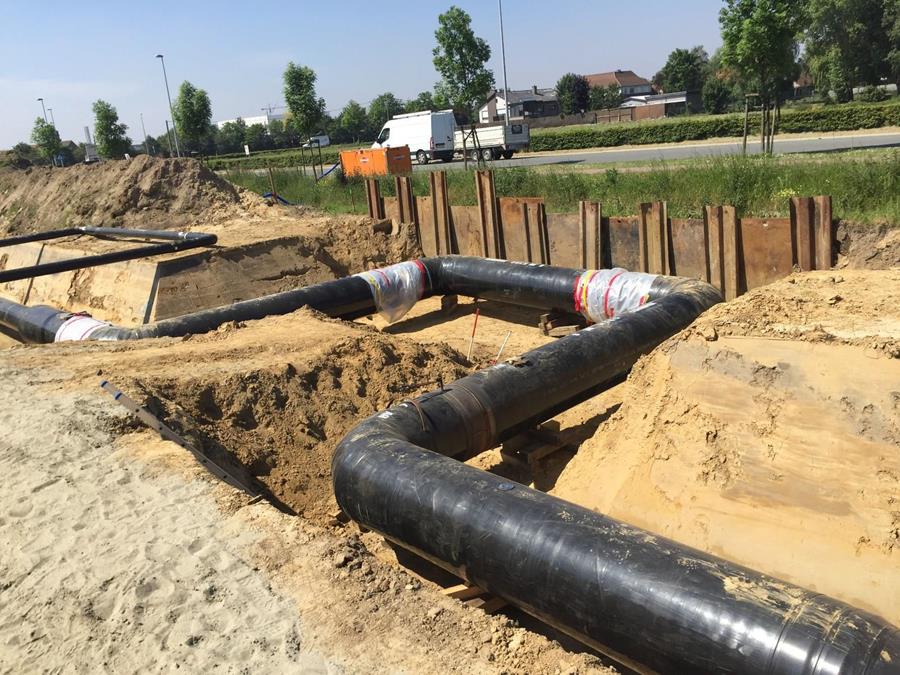Industrial process heat: the shift towards sustainability is happening
Generating sustainable heat in industry, it can be done!
Jo Neyens, policy officer for heat networks at the (Belgian) Organisation for Sustainable Energy (ODE), opened the study day. “In Flanders, 17% of total energy demand is for electricity, 23% for transport and 60% for heat. Heat is a dormant energy giant. 30%-point of that 60% is used for heat, cooling and hot water in households, and the remaining 30%-point for generating industrial process heat. Making the industrial heat supply more sustainable is therefore definitely needed. Not only to meet European climate targets, but also to maintain the economic clout of our industry in the current energy crisis.”
“The knowledge and technology to make it more sustainable are there,” Jo Neyens continues. “Everything starts, of course, with heat saving and making useful use of residual heat. The next step is to use renewable energy sources, such as geothermal heat, aquathermy, ground energy, solar heat and bioenergy. Technological solutions are also available for the transport, exchange and storage of renewable heat.”
“Although there are specific challenges for industry,” adds Guy Vekemans, business development manager at Flemish energy cluster Flux50. “Consider, for example, the temperature levels. Some operations require 500 °C or more. Re-thinking the existing heat supply is also a difficult thinking exercise. Is there residual heat? What new energy systems are suitable? How can these be matched to process needs? But there are innovations on the way for these challenges. This is already evident from Flux50’s portfolio of innovation projects.”

Even with a few companies, an energy hub can be realised.
In the port of Antwerp (Belgium), Antea Group brought together three companies with complementary energy profiles.
Tips for the industry
Rethink your heat supply
At materials producer Umicore, that thought exercise is already being made. Jan Casteels, site sustainability director at Umicore: “Umicore wants zero greenhouse gas emissions by 2035. Making our Olen site more sustainable is necessary to achieve this goal. In 2020, the site was still responsible for a solid 80,000 tonnes of CO2 emissions.”
Umicore Olen dates back to the 1920s. The era when steam was still made with coal. Today, steam is still being made. “There is a steam plant running on natural gas that delivers 20 bars of steam,” says Hartwin Leen, manager of energy consultancy Kelvin Solutions. “In fact, that 20 bar is not needed because the bulk of the production lines do not need 20 bar.”
“Initially, the natural gas-based steam infrastructure will be partially supplemented by a smart low-temperature heat network,” Hartwin Leen clarifies. “That network is supplied with waste heat and renewable geothermal energy. The ambition is to realise a state-of-the-art geothermal project between Umicore and the communities based around Umicore.”
“Although the real challenge in this story is to get all stakeholders on board,” clarifies Jan Casteels. “Ranging from your own engineers, who may prefer not to deviate from the beaten track, to the neighbourhood around the site and the government agencies involved.”
Solar panels

Up to 400 °C with solar panels
Technology is never static, and neither is solar panel technology. “However, the technology we work with is a 100-year-old technology, which was not developed further because gas and oil were cheaper at the time,” says Koen Vermout, business manager of Azteq. “Today, the technology is undergoing a revival. Concentrated Solar Thermal Energy (CST) is ideal for use as a high-quality thermal source in industry. Using concentrated sunlight, we generate high-temperature heat. In doing so, we can generate temperatures of up to 400 °C, including in Belgium. The installation has a lifetime of more than 25 years. In Ostend and Kallo, we have sites supplying 180 °C steam at 10 bar; in Genk, the site produces 180 °C thermal oil for a heat network.”
Connect to an energy hub
According to Patrick Verdonck, manager business development & innovation at Antea Group, collaboration is also crucial. For him, energy hubs in business parks are key to the heat transition. “An energy hub is a geographically defined area within which the business park acts as an energy hub for the whole. In the energy hub, renewable sources are used as much as possible.”
“In fact, the aim is to make the business park self-sufficient,” says Patrick Verdonck. “Of course, not every business park is suitable. There is a need for energy demand on the one hand, and energy supply on the other: for example, from solar collectors or from certain conversion technologies such as heat pumps. On the other hand, there is also a need for storage, for example via soil or battery systems.”
Energy profile
Patrick Verdonck: “I advocate that a company’s energy profile becomes an important issue when choosing a location in a business park.”
“Even with a few companies, an energy hub can be realised. In the port of Antwerp, for example, we have brought together three companies: tank-cleaning company Cotac that needs a lot of steam and water for its cleaning activities, oil producer Aveno with standard consumption, and logistics specialist Mexico Natie that has a storage area with a large roof and no electricity demand. Instead of each company meeting its energy demand separately, it was chosen to do so jointly.”
“To cover Cotac’s heat demand, a CHP plant turned out to be ideal, with an additional gas plant to handle peaks. As icing on the cake, the electricity generated by the CHP can cover a large part of Aveno’s electricity demand. A PV plant on the roof of Mexico Nation supplies the rest.”
“Energy hubs are thus definitely a viable solution when companies with complementary energy profiles work together. I therefore advocate that the energy profile should be a key issue when choosing the location of energy-intensive companies in a business park.”
Shipped heat, a market void?
“We have a dense navigable waterway network in Flanders. Ideal for transporting heat,” explains Jan D’Haeyer, business manager of Shipit. “We have found a way to capture residual heat from industry and collect it in a ship. Instead of having to build a pipeline to transport that heat, we can transport it with our ship. Are we talking about 5 km or 50 km? No problem. If the source and the customer are on the water, we can switch very quickly. We have low and high-temperature solutions. In theory, we can transport heat up to 500 °C.”

Up to 200 °C with heat pump
A very high-temperature heat pump is on its way. Steven Lecompte of UGent (University of Ghent, Belgium) is researching this with his Upheat-INES project. The intention is to upgrade low-grade residual heat of 50 to 100 °C to medium heat of 150 to 200 °C with a heat pump. That upgraded heat can then be valorised and used within (petro)chemical processes or in other downstream energy-intensive clusters. “The heat pump market has huge potential. Belgium can play a pioneering role in this. For example, Flanders has immense knowledge of cooling technologies. Something that is a great advantage for the development of new heat pumps.”
That Flemish research institutions are also doing their bit is further evidenced by the reactions of Ivan Verhaert of UAntwerpen where the Chair of Heat Networks was recently started and of Johan Van Bael of VITO/EnergyVille who are developing advanced control algorithms for heat networks (STORM controller).
Take a close look at your own production and waste streams
Sometimes, as a company, you don’t have to venture out far. Flooring specialist Unilin, for example, burns its non-recyclable wood waste and uses that thermal energy to generate steam and electricity. Steven Vandenbulcke, project manager A&U Energy: “The waste wood is burned in a fluidised bed furnace, after which the heat is converted into steam in a steam turbine. This steam goes to Unilin, which uses 80 bars of steam to make chipboard, and to potato company Agristo, which is supplied with 30 bars of steam. The steam turbine itself drives a generator that produces electricity. That electricity is used by Unilin and partly fed into the grid.”

“In this project, two steam networks were constructed,” Steven Vandenbulcke clarifies. “One steam network to Unilin with a length of 1 km and one to Agristo with a length of 2.5 km. These were very large infrastructure works. Because the pipes have to slope, so that condensation can coalesce, they are sometimes up to 4 metres deep. It was therefore a big challenge to get an environmental permit to cross all areas and to receive an easement from all landowners.”
“When we started the project in 2016, Agristo was the only one of Unilin’s industrial neighbours interested in working together. And how lucky for them that they believed in the project, because today it turns out it was a very interesting deal.”
Source and images: energik.be
